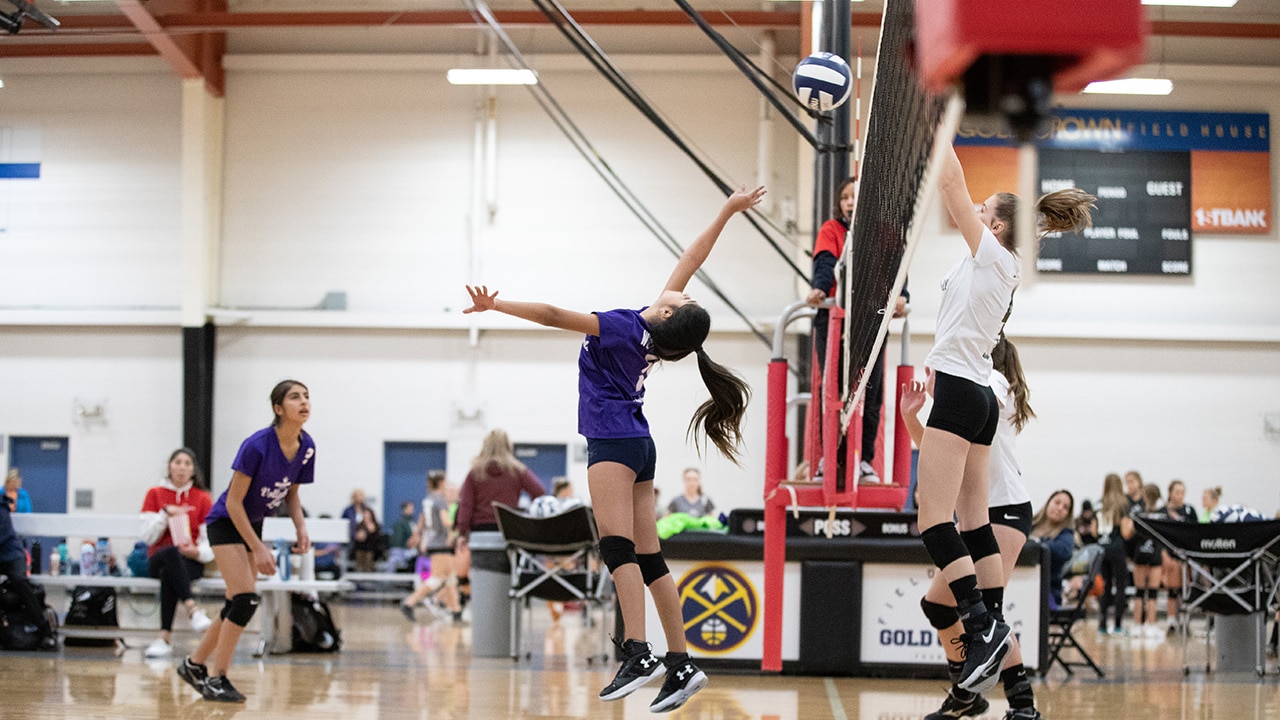As youth volleyball continues to surge in popularity, so does the importance of understanding and addressing the risks associated with the sport. Volleyball, renowned for its fast-paced action and dynamic movements, offers numerous physical and mental benefits for young players. However, behind the thrill of the game lies a sobering reality: the prevalence of injuries among youth players. While acute injuries like sprains and fractures may grab headlines, it's the less conspicuous but serious problem of overuse injuries that deserves our attention. In this blog, experts from Children's Hospital Colorado delve into the world of youth volleyball, exploring why overuse injuries are more common than their acute counterparts, and how parents and youth coaches can play a pivotal role in safeguarding the well-being of young athletes.
Second to only soccer, volleyball has one of the highest participation rates worldwide, including both indoor and beach volleyball. It is one of the unique team sports that has evolved into two distinct Olympic events–indoor and beach. Although injury patterns differ between indoor and beach volleyball, there are similar injuries commonly seen between the two sports. Overall, overuse injuries are more common than acute injuries because of the amount of repetition, improper technique, and type of playing surface. Overuse conditions of the knee, shoulder and lower back are not unusual in volleyball.
Ankle injuries: Ankle sprains are the most common acute injuries seen in volleyball athletes, accounting for about 40% of all volleyball related injuries. They occur most commonly at the net when an opposing player lands onto another player’s foot. When dealing with an ankle sprain it is important to adequately rehab the injury before returning to play, preferably under the supervision of an athletic trainer or physical therapist.
Recurrent ankle sprains are extremely common within 6 months of the initial injury, owing to inadequate rehabilitation. One study showed that balance board training to regain balance is an effective tool to help prevent recurrent ankle injuries in volleyball players.
Hand injuries: Trauma to fingers is extremely common, especially during setting and blocking. Most finger injuries in volleyball involve joint sprains, tendon tears, and dislocations. X-rays are indicated in most finger injuries in volleyball to evaluate for any fractures.
Knee injuries: The nature of volleyball requires repetitive explosive jumping, which places a lot of stress on the patellar tendon, resulting in pain in this area. At some point, approximately half of volleyball athletes develop patellar tendinitis, known to many as “jumper’s knee”. The most common site of pain is where the patellar tendon attaches to the lower pole of the knee cap. Treatment consists of stretching and strengthening exercises, and use of a patellar tendon strap can sometimes improve the pain. For some athletes, a period of rest from jumping activities may be necessary.
Although not as common as patellar tendinitis, anterior cruciate ligament (ACL) tears can be a more serious injury and typically occurs in volleyball during a cutting maneuver or when an athlete comes down from a jump awkwardly. Most athletes who wish to return to high demand sports like volleyball generally opt for surgical repair to have the ligament reconstructed. Because many athletes have difficulties returning to high level sports and the potential long term complications after an ACL tear, there is a lot of emphasis placed on prevention programs.
Shoulder injuries: Volleyball players repetitively use their shoulders for overhead serving, spiking and blocking, which commonly leads to shoulder pain. Overuse of the rotator cuff muscles can lead to rotator cuff tendinitis or tears, which is more commonly seen in adults than in young athletes, although it can occur. More often, pain from shoulder instability and resulting impingement is what we typically see in our young athletes. In addition to the rotator cuff muscles, there are also ligaments that help to stabilize the shoulder joint during movement.
In volleyball, the player’s arm typically goes into extreme positions and rotations for hitting. When these muscles and ligaments are overworked and unable to restrain excessive movement of the shoulder, the player may sense as if the shoulder is unstable and typically will develop pain when the rotator cuff and labrum (cartilage) gets impinged against structures inside the shoulder joint because of excessive shoulder movement. Over time, this can also lead to a labral tear.
Lower back pain: Back pain in volleyball players is very common because of repetitive bending and rotating of the trunk. Strains of the lower back is the most common back injury although the repetitive hyperextension of the lower back during hitting and setting can also place a lot of stress on the lower back bones. This can lead to stress fractures of the vertebra in the spine, known as spondylolysis, which is a very common cause of low back pain in volleyball players. Adolescents, in particular, are very vulnerable to this injury because their vertebral bones are still weak in this area. Learn how we treat spondylolysis.
Although volleyball is a relatively safe sport compared to other high contact, collision sports, it does lend itself to unique injury patterns; particularly overuse injuries of the knee, shoulder and back. Like many young athletes who are training year round or are focusing on just one sport, regardless of which sport, overuse injuries in volleyball players are becoming problematic. To help prevent these overuse injuries, we highly encourage limiting the number of teams an athlete plays on in a given season, as well as discouraging participation in only one sport year round.
Check out more sports safety articles.

